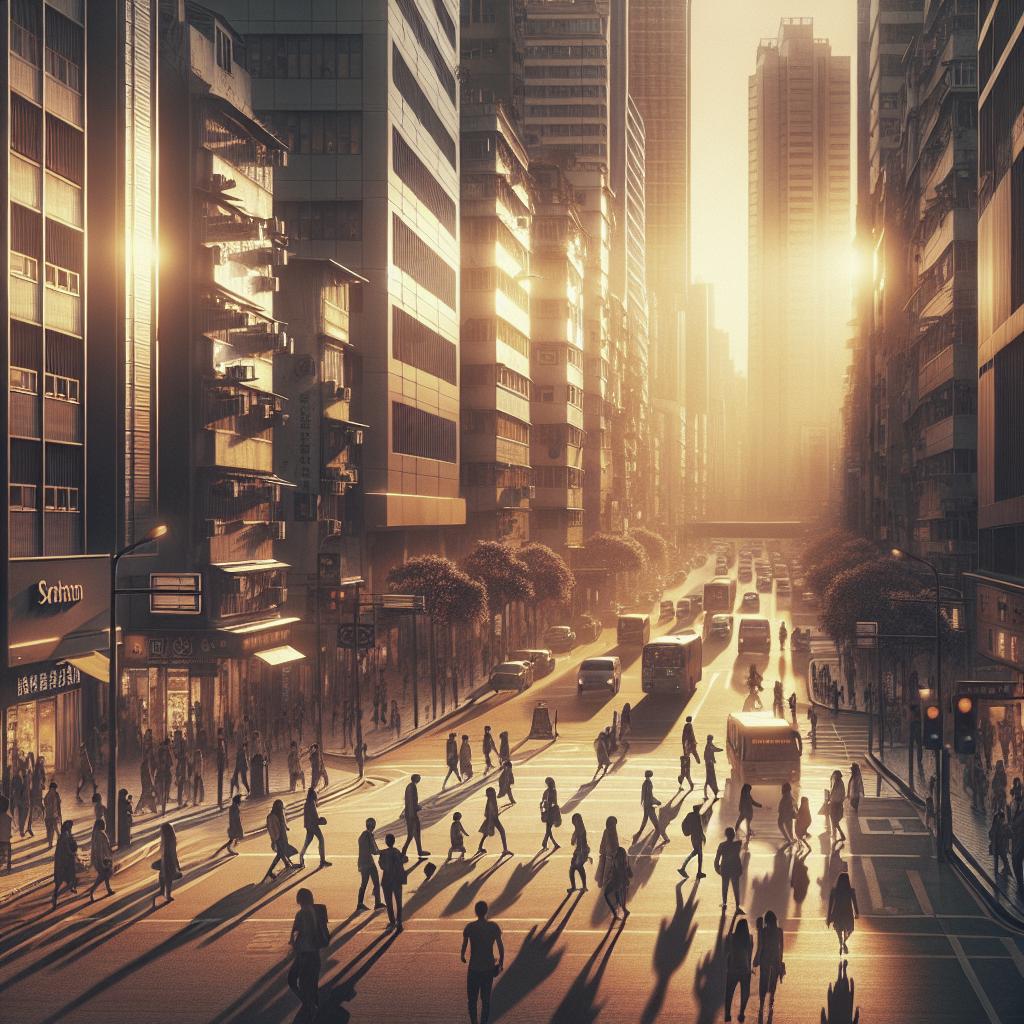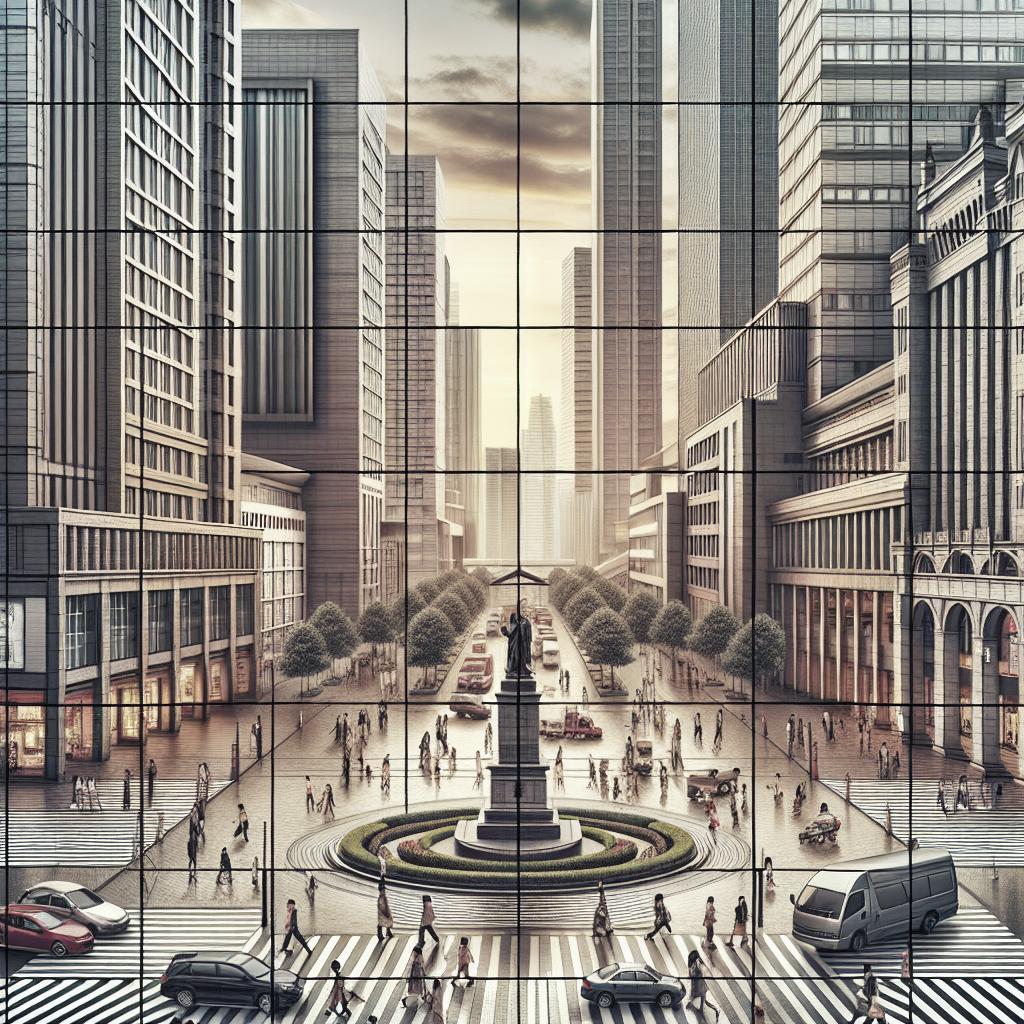< lang="en">
Street photography captures the essence of daily life in an urban landscape, and the golden hour—shortly after sunrise or before sunset—presents a unique opportunity for photographers to capture stunning images. In this post, we’ll offer an in-depth guide on maximizing the potential of the golden hour in street photography. The article breaks down essential tips such as scouting the location, selecting the right lens, and knowing your camera settings. It also covers nuanced aspects like white balance, squinting eyes, and the importance of capturing emotions. Whether you’re a novice or a seasoned photographer, this guide aims to fine-tune your golden hour shooting skills.
1. Scout your location
Knowing your location beforehand is vital for maximizing your golden hour shoot. Spend some time walking around the area during different times of the day before the golden hour. This will help you identify potential spots that will be dramatically transformed by the unique lighting conditions.
Look for interesting backgrounds, leading lines, or reflective surfaces that can enhance your composition. Identify places where the natural light will cast long, intriguing shadows or create a beautiful backlight. By scouting your location, you equip yourself with a mental map, making you more agile and ready to capture that perfect shot when the golden hour arrives.
2. Get there an hour early
Arriving early gives you ample time to set up and prepare for the shoot. This preparatory period allows you to re-familiarize yourself with the location under changing light conditions and to make last-minute adjustments according to the current situation.
An early arrival also offers an opportunity to experiment with different angles, settings, and focal lengths while the lighting dynamically changes. This extra time can make the difference between a rushed shoot and capturing that perfect, well-thought-out image.
3. Select a fast lens
A fast lens, such as one with a wide aperture (f/2.8 or lower), is crucial for maximizing the light available during the golden hour. These lenses allow for faster shutter speeds, reducing the risk of camera shake and producing sharp images even in low-light conditions.
Wide apertures also help to create a shallow depth of field, which can highlight your subject against a beautifully blurred background. This is particularly beneficial in street photography, where isolating a subject can bring focus and emotional weight to the scene.
4. Know your camera
Familiarity with your camera’s functionalities and settings can elevate your golden hour street photography from good to exceptional. Dive into the user manual if needed, and practice adjusting settings quickly to adapt to changing light conditions.
Understand the strengths and limitations of your equipment. For instance, knowing how your camera handles high ISO settings can impact how you shoot in lower light conditions, which is crucial during the golden hour as the light diminishes rapidly.
5. Watch your white balance
The golden hour light can cast a warm, yellowish tint on your photos, which may or may not be desirable depending on your creative vision. Monitoring your white balance settings is crucial to ensuring that the warmth of the lighting complements your photo rather than overpowering it.
Some cameras have specific presets for golden hour lighting, but for precise control, you may want to consider setting a custom white balance or adjusting this parameter in post-processing. A correct white balance helps maintain the natural atmospherics of the scene without distorting the colors.
6. Beware of squinting eyes
The low-angled light during the golden hour can cause uncomfortable squinting for your subjects, especially if they are facing the sun. To avoid this, direct your subjects to look away from the light or use natural elements like trees or buildings to diffuse the harsh rays.
Another strategy is to capture candid shots where the subject isn’t looking directly into the sunlight. This approach not only prevents squinting but often results in more natural and genuine expressions, which are the hallmark of good street photography.
7. Check your exposure regularly
During the golden hour, the light changes quickly, requiring you to constantly monitor and adjust your exposure settings. Check your histogram regularly to ensure you’re capturing the ideal range of shadows and highlights.
Manual exposure settings can offer greater control, but using exposure compensation on your camera’s auto settings can also be useful for making quick adjustments. Regularly reviewing your shots can help you catch any overexposed or underexposed images before it’s too late to reshoot.
8. Take as many photos as possible
The fleeting nature of the golden hour necessitates a high volume of shots to capture the perfect moment. Continuous shooting or burst mode can increase your chances of nailing that ideal composition and lighting match.
Experiment with different angles, perspectives, and compositions. The more photos you take, the higher the likelihood you’ll capture the serendipitous, compelling images that street photography thrives on.
9. Learn to shoot in manual mode
Shooting in manual mode grants you full control over your camera’s settings, allowing for optimal adjustments to exposure, aperture, and shutter speed based on the changing light conditions of the golden hour.
While it may seem daunting at first, practicing manual mode can significantly enhance your photography skills. The immediate feedback from each shot educates you on fine-tuning settings to achieve the desired visual effect, making you a more adept and confident photographer.
10. Stay still (or use a tripod)
During the golden hour, slow shutter speeds might be necessary due to reduced light, increasing the risk of camera shake. To mitigate this, aim to keep as still as possible while shooting. Bracing yourself against a stable surface can help.
Using a tripod is another excellent option, providing stability and enabling longer exposures without blurring. If moving around is essential for capturing street scenes, consider a monopod or a compact tripod for greater mobility.
11. Carry a reflector
A reflector can be a game-changer in street photography during the golden hour. It allows you to bounce natural light onto your subject, reducing harsh shadows and creating a more balanced image.
Reflectors are lightweight and portable, making them easy to carry around. Experiment with different sizes and angles to discover how they can best enhance your photos. Sometimes even a small reflector can make a noticeable difference in lighting quality.
12. Embrace imperfections (and unpredictable weather)
Street photography often involves working in less-than-ideal conditions. Imperfections such as a sudden change in weather or unplanned obstructions can sometimes lead to unexpectedly beautiful shots. Embrace these quirks and leverage them creatively.
Unpredictable elements offer opportunities for spontaneity and unique compositions. Be adaptable and ready to switch gears if necessary. Sometimes, a light drizzle or mist can add a magical touch to the golden hour’s ethereal quality.
13. Capture emotions
Beyond technical prowess, the essence of great street photography lies in capturing genuine emotions. The soft, golden light enhances facial expressions and moods, adding depth and storytelling to your images.
Focus on candid moments where people are naturally engaged in their activities. The golden hour provides an almost cinematic backdrop, making everyday emotions not only visible but also profoundly touching.
Summary of main points
| Key Points | Takeaway |
|---|---|
| Scout your location | Identify potential photography spots ahead of time. |
| Get there an hour early | Provide ample time to set up and adjust to changing light conditions. |
| Select a fast lens | Use lenses with wide apertures for better low-light performance. |
| Know your camera | Familiarize yourself with the camera’s functionalities and settings. |
| Watch your white balance | Ensure the golden light doesn’t overpower your images. |
| Beware of squinting eyes | Avoid subjects facing the direct sun to prevent squinting. |
| Check your exposure regularly | Constantly monitor and adjust exposure settings as light changes. |
| Take as many photos as possible | Increase your chances of capturing the perfect shot by taking multiple images. |
| Learn to shoot in manual mode | Gain full control over your settings for optimal results. |
| Stay still (or use a tripod) | Maintain stability to ensure sharp images. |
| Carry a reflector | Use a reflector to bounce light and reduce shadows. |
| Embrace imperfections (and unpredictable weather) | Utilize unexpected elements creatively. |
| Capture emotions | Focus on candid moments and genuine expressions. |
About the contributor
Lucas Martin is a journalism and communications graduate with a fervent interest in travel, technology, and innovation. Through his diverse experiences in local media and blog projects, Lucas has honed a passion for creative writing and SEO practices, aiming to merge storytelling with technical acuity. Follow him as he shares insights and tips on capturing the world’s beauty and complexity through the lens.


